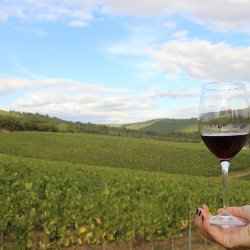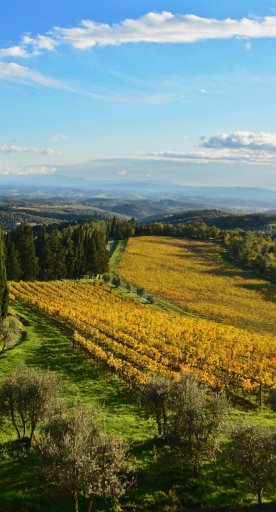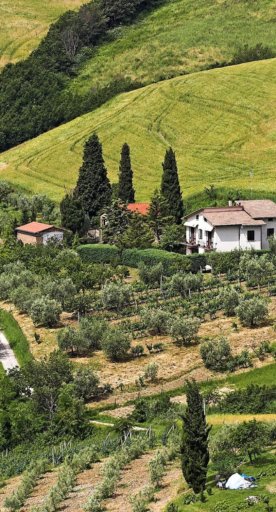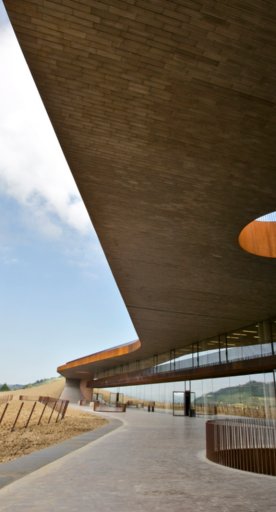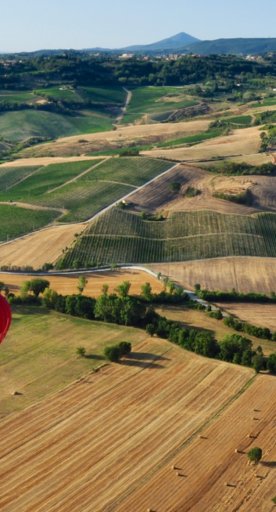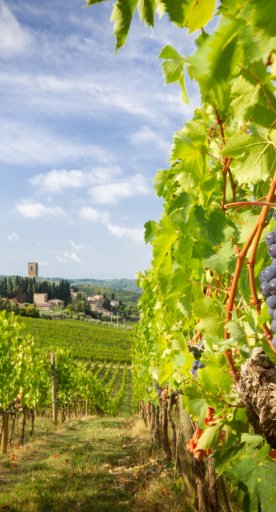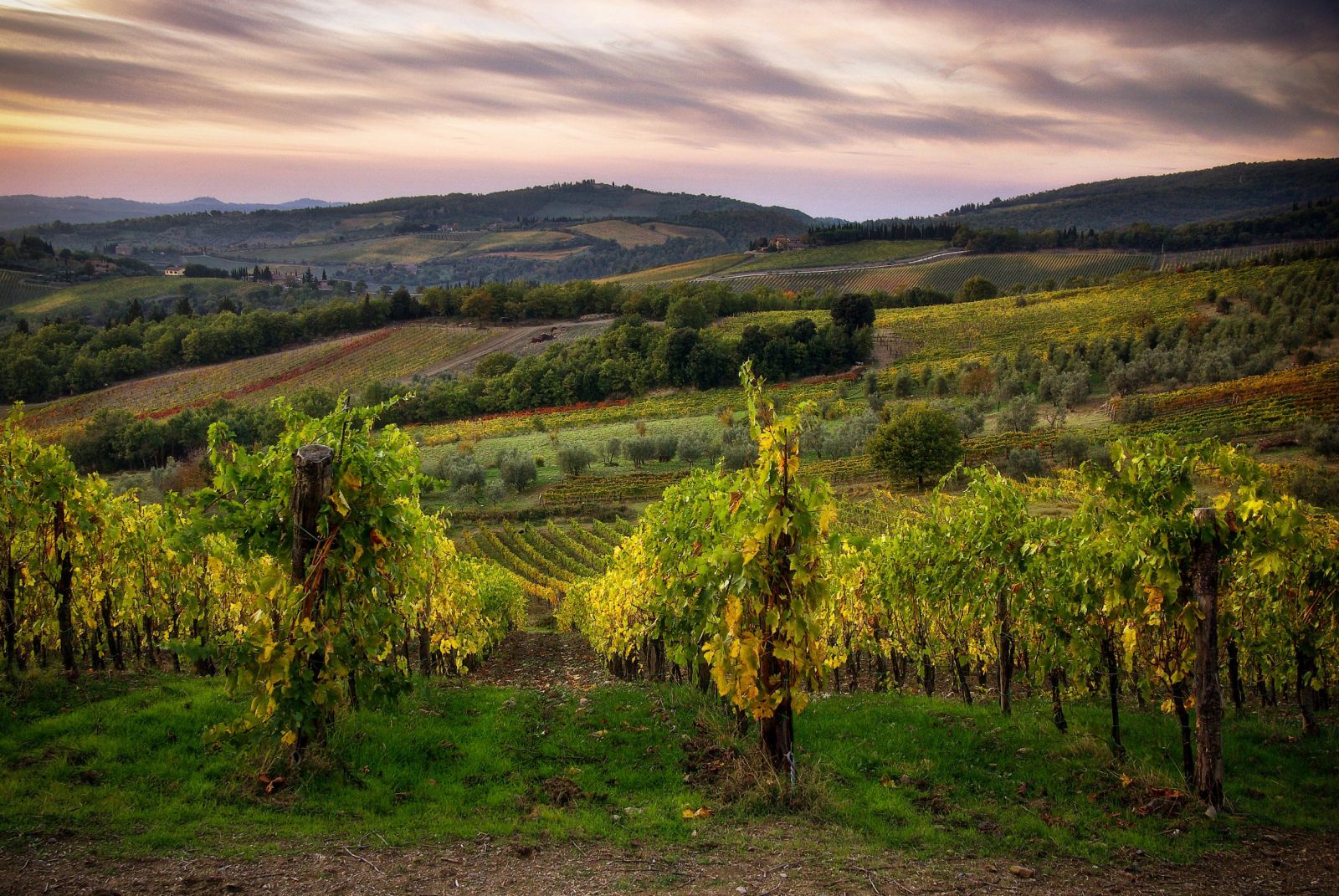San Casciano in Val di Pesa
A “Florentine” gateway to the winding Chianti landscape, a countryside dotted with churches and castles
San Casciano is a lovely medieval village perched on a hill, and is the first town in the Chianti area that greets you coming from the north. It’s a real gem on the rolling hills planted with vines that characterize the area.
The area is full of small fortifications, parish churches and hamlets, all ready to explore and scattered among the first curving hairpin bends that beckon you to continue discovering Chianti. San Casciano, once property of the Florentine Bishops since its foundation, was annexed to the Republic of Florence in the 13th century and was subsequently fortified, becoming a bulwark positioned to defend threats from the Sienese countryside. The town’s medieval walls and towers still remain.
What to see in San Casciano
In the town, don’t miss the Giuliano Ghelli Museum inside the Church of Santa Maria del Gesù. In the section dedicated to Holy Art, admire the dossal attributed to Coppo di Marcovaldo with St. Michael the Archangel and the stories surrounding. You can also find the Madonna and Child by Ambrogio Lorenzetti. In the archaeological section, you can find a collection of relics found in the area, dating back as early as the 7th century BC with various Etruscan objects, such as the Stele dell'Arciere, coming from the Etruscan tomb of Sant'Angelo in Bibbione. A third section is dedicated to homes, ranging from typical Chianti farmhouses to primitive homes, using scale models and period photographs.
The remarkable Collegiate Church and the Church of Mercy (or Santa Maria al Prato) deserve a mention. Here, you can find a rich heritage of works by important Florentine and Sienese artists, including a particularly breathtaking Crucifix by Simone Martini.
In the town, don’t miss the Giuliano Ghelli Museum inside the Church of Santa Maria del Gesù. In the section dedicated to Holy Art, admire the dossal attributed to Coppo di Marcovaldo with St. Michael the Archangel and the stories surrounding. You can also find the Madonna and Child by Ambrogio Lorenzetti. In the archaeological section, you can find a collection of relics found in the area, dating back as early as the 7th century BC with various Etruscan objects, such as the Stele dell'Arciere, coming from the Etruscan tomb of Sant'Angelo in Bibbione. A third section is dedicated to homes, ranging from typical Chianti farmhouses to primitive homes, using scale models and period photographs.
The remarkable Collegiate Church and the Church of Mercy (or Santa Maria al Prato) deserve a mention. Here, you can find a rich heritage of works by important Florentine and Sienese artists, including a particularly breathtaking Crucifix by Simone Martini.
Nearby
San Casciano is located in an area known for producing good wine and quality cuisine in Tuscany. Chianti is an area characterized by traditional farms and wineries, but also enriched by numerous churches, parish churches, castles and medieval villages.
In terms of churches, check out the parish church of Santa Cecilia in Decimo, conveniently near the residential center, the Romanesque church of San Giovanni in Sugana, the church of San Pancrazio - a breathtaking example of Longobard-influenced Romanesque architecture - and the church of Santo Stefano a Campoli (from 903), near Mercatale Val di Pesa.
There’s as many spectacular villas as there are churches, so be sure to check out Villa i Collazzi and Villa Tattoli near the town of Cerbaia.
In Sant’Andrea in Percussina, head to Villa Bossi-Pucci, also known as l’Albergaccio, known for having hosted Niccolò Machiavelli during his exile. Also have a look around Villa Mangiacane, built by the Machiavelli family and, according to several studies, designed by Michelangelo Buonarroti with later additions by Giorgio Vasari.
You’ll also find impressive castles scattered around the region: add the castles of Bibbione, (built before the year 1000), Pergolato and Gabbiano, with their distinctive round towers and crenellated outside walls, to your list of things to see.
In La Collina, the Tomb of the Archer is well worth a visit. An Etruscan tomb dating back to the 7th century BC inside of which vases, lids and ivory plaques were found.
In terms of more contemporary works, have a look Mauro Staccioli’s sculptures in the hills, but it’s also worth heading a few minutes from San Casciano to see the fascinating and innovative Cantina Antinori, a production center and museum and in itself a work of art with its unique architecture. Among the artistic and historical works preserved inside is a letter by Giacomo Puccini, ceramics by Della Robbia and paintings by Lucio Fontana.
San Casciano is located in an area known for producing good wine and quality cuisine in Tuscany. Chianti is an area characterized by traditional farms and wineries, but also enriched by numerous churches, parish churches, castles and medieval villages.
In terms of churches, check out the parish church of Santa Cecilia in Decimo, conveniently near the residential center, the Romanesque church of San Giovanni in Sugana, the church of San Pancrazio - a breathtaking example of Longobard-influenced Romanesque architecture - and the church of Santo Stefano a Campoli (from 903), near Mercatale Val di Pesa.
There’s as many spectacular villas as there are churches, so be sure to check out Villa i Collazzi and Villa Tattoli near the town of Cerbaia.
In Sant’Andrea in Percussina, head to Villa Bossi-Pucci, also known as l’Albergaccio, known for having hosted Niccolò Machiavelli during his exile. Also have a look around Villa Mangiacane, built by the Machiavelli family and, according to several studies, designed by Michelangelo Buonarroti with later additions by Giorgio Vasari.
You’ll also find impressive castles scattered around the region: add the castles of Bibbione, (built before the year 1000), Pergolato and Gabbiano, with their distinctive round towers and crenellated outside walls, to your list of things to see.
In La Collina, the Tomb of the Archer is well worth a visit. An Etruscan tomb dating back to the 7th century BC inside of which vases, lids and ivory plaques were found.
In terms of more contemporary works, have a look Mauro Staccioli’s sculptures in the hills, but it’s also worth heading a few minutes from San Casciano to see the fascinating and innovative Cantina Antinori, a production center and museum and in itself a work of art with its unique architecture. Among the artistic and historical works preserved inside is a letter by Giacomo Puccini, ceramics by Della Robbia and paintings by Lucio Fontana.
Events
The Sancascianese Medieval Carnival is a traditional event in spring held to remember the Siege of Castruccio Castracani at the Castle of San Casciano. There’s an abundance of activities to enjoy, such as the Medieval Camp with a market, livestock fair, archery, parade of the contrade (with hundreds of participants) and exhibitions dedicated to the siege.
The Sancascianese Medieval Carnival is a traditional event in spring held to remember the Siege of Castruccio Castracani at the Castle of San Casciano. There’s an abundance of activities to enjoy, such as the Medieval Camp with a market, livestock fair, archery, parade of the contrade (with hundreds of participants) and exhibitions dedicated to the siege.
Typical products and dishes
Acting as the gateway to Chianti, the San Casciano area is naturally rich in the area’s typical products with many opportunities to participate in tastings and guided tours. Unsurprisingly, numerous food and wine itineraries pass through here that allow you to delve into its gastronomic tradition while exploring some of the most famous and exciting Tuscan landscapes.
For example, the Chianti Colli Fiorentini wine route unites wineries and farms that produce Chianti Colli Fiorentini DOCG.
Another DOCG in the area is Chianti Classico, a title reserved for the oldest wines within the largest production area of Chianti. The production of Chianti Classico DOP Extra Virgin Olive Oil is also a historic tradition, and the surrounding area corresponding to the Chianti Classico wine can be explored by following the Chianti Classico Wine and Oil Route.
Acting as the gateway to Chianti, the San Casciano area is naturally rich in the area’s typical products with many opportunities to participate in tastings and guided tours. Unsurprisingly, numerous food and wine itineraries pass through here that allow you to delve into its gastronomic tradition while exploring some of the most famous and exciting Tuscan landscapes.
For example, the Chianti Colli Fiorentini wine route unites wineries and farms that produce Chianti Colli Fiorentini DOCG.
Another DOCG in the area is Chianti Classico, a title reserved for the oldest wines within the largest production area of Chianti. The production of Chianti Classico DOP Extra Virgin Olive Oil is also a historic tradition, and the surrounding area corresponding to the Chianti Classico wine can be explored by following the Chianti Classico Wine and Oil Route.
What’s nearby?
Chianti






